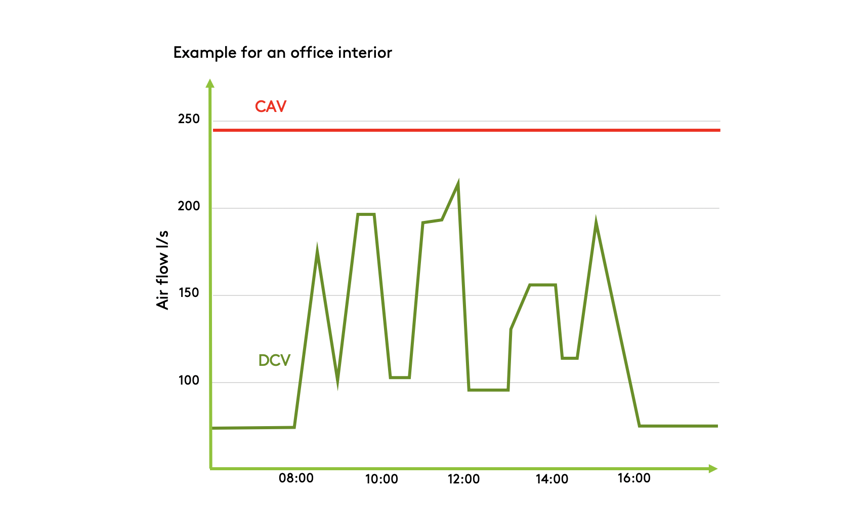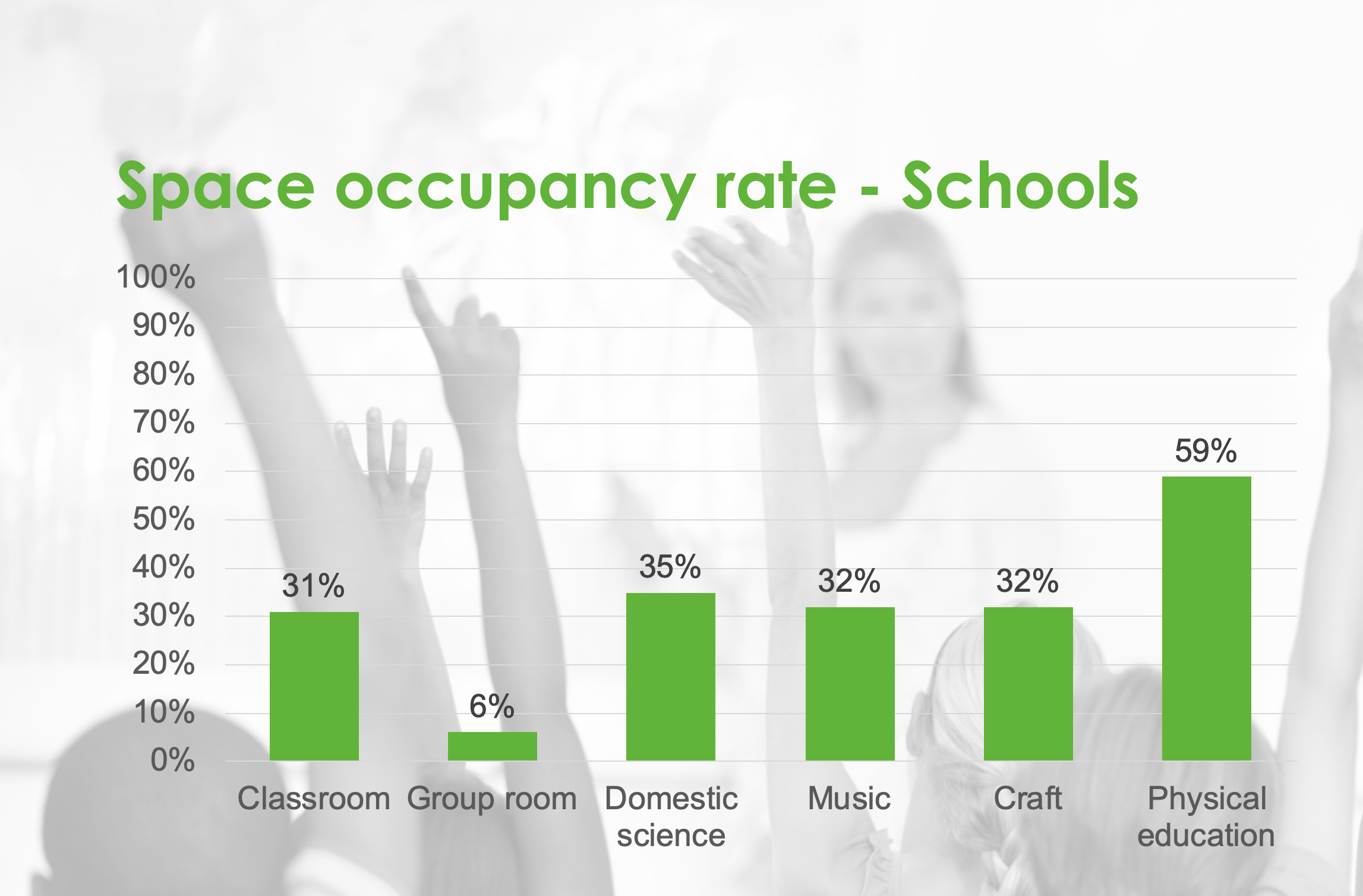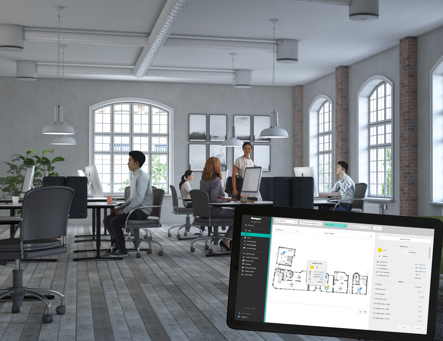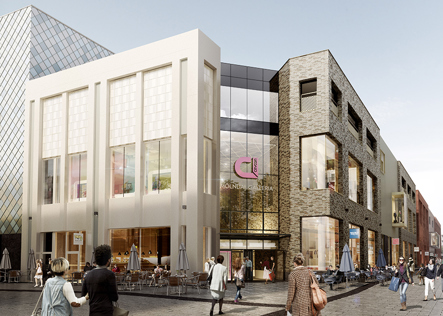
We explain Demand Controlled Ventilation
Demand-controlled ventilation (VAV and DCV) is, as the term implies, ventilation solutions that manually or automatically regulate the airflow to meet the exact need at a given time, unlike CAV where the airflow is constant. If a room is empty, supply of air is reduced and if another room is full of people, the system will increase the volume to this area. In this guide we explain how it works.
Save energy without compromising on indoor climate
The reason for adjusting the airflow is simple. It is not necessary to supply the same air volume for full rooms when they are actually empty. With CAV, the airflow is constant and often set to a higher volume to avoid low air supply when the room is full. Of course, this means that the same amount of air is supplied even though the room is completely empty. The solution to this is called demand-controlled ventilation. VAV and DCV are two types of demand-controlled systems that help you save energy.

One purpose - two different systems
VAV and DCV systems fulfill the same purpose, to adapt ventilation and air conditioning to varying levels of activity in our premises. In general, it is possible to achieve higher energy savings and better indoor climate with a more advanced system. But there are of course also applications where simpler systems work well. What, then, are the differences and benefits of the two options?
VAV - Variable Air Volume
- Simple demand control - the air flow can vary over the operating time and can be adapted to e.g. temperature or air quality
- This often means lower investment costs for smaller projects compared to DCV
- Often meets the requirements for simpler projects, such as preschools and smaller schools
- Often provides good energy savings compared to CAV (constant flow system)
DCV - Demand Controlled Ventilation
- Advanced demand management - adjusts air flows and temperature depending on the needs and presence status of the premises, e.g. with different operating cases
- Greater opportunity for customised comfort according to different customer needs
- It is often possible to combine air and waterborne products for a complete indoor climate system
- A strong contributing factor to a good classification in various certification programs such as BREEAM, WELL and LEED
- Greater opportunities for energy savings, which is especially an advantage in buildings with high energy consumption for ventilation and air conditioning

Advanced, not complicated!
Of course, we want the premises we occupy to be ventilated correctly for the best health and wellbeing. But in most types of buildings, the level of activity varies around the clock, which means that we often ventilate empty rooms as if they were full!
The most advanced system to counter this is DCV. In this case, advanced means a smart system that is technically more developed without introducing any complexity. This unlocks extra opportunities to maximize comfort, minimize costs and avoid unnecessary energy consumption.
Three basic functions with DCV:
- The air is moved where the need is
- Always stepless
- Always supervised
DCV regulates based on:
- Temperature - To keep the right temperature in the room
- Air quality - To ensure comfort and health in the room
- Humidity - So that the building is not exposed to mold-promoting moisture content
- Occupancy - To save energy
Since ventilation is based on presence and needs, the system runs on "economy speed" as soon as the needs decrease in the building
Why demand-controlled ventilation?
Investigations in i.a. schools show how the attendance rate in different types of spaces is generally low, which means that a system that adjusts ventilation and air conditioning as needed can save up to 80% of the fan energy and 40% of the heating and cooling energy. In addition, the system usually requires smaller ventilation units and cooling machines, which reduces the investment cost. The same is true for many other types of premises, e.g. offices, housing and hotels.

Attendance in the classroom during school hours
TeknDr. Dennis Johansson, Presence in Buildings - Measurements and Estimates, 2010
It is clear here that it is not sustainable from an energy and environmental perspective to ventilate at full power around the clock. This is not necessary even during the most active hours of the day. There are systems that help to keep energy consumption low, the economic savings high and the indoor climate excellent. A simpler VAV system may be fully sufficient in smaller projects where the requirements picture is not so advanced and the cost of investment a decisive factor. For projects where the demands on the indoor climate are higher and the building possibly. To be certified according to any green or wellbeing based building program, more advanced DCV systems are required!
The occupant
The past few decades have meant major changes in where and how most of us spend our days, but we humans basically function the same way they did thousands of years ago. By starting from the human being when we design our indoor climate systems, we can keep comfort high, which positively affects both our performance and our long-term health.

